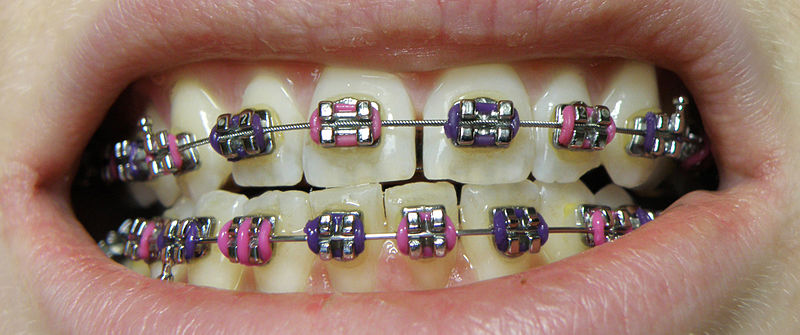Why Cumming Invisalign is the Perfect Choice for a Discreet Orthodontic Service
Why Cumming Invisalign is the Perfect Choice for a Discreet Orthodontic Service
Blog Article
Comprehensive Guide to Orthodontics Treatments for Fixing Oral Misalignments
Understanding the complexities of each treatment, including their mechanisms, benefits, and potential drawbacks, is vital in making educated choices about one's orthodontic therapy. As we navigate through the comprehensive guide to orthodontic procedures for correcting dental misalignments, the detailed information of each approach will certainly unravel, dropping light on the path toward a functional and harmonious oral alignment.
Orthodontic Procedures Overview

In addition to clear aligners and typical dental braces, orthodontists may also advise other interventions like headwear, palatal expanders, or retainers to attend to particular positioning issues (cumming orthodontist). These procedures are customized per person's one-of-a-kind demands and might involve a combination of therapies to accomplish the preferred results. Regular adjustments and surveillance are critical components of orthodontic treatment to ensure development is on track and to make any kind of necessary adjustments along the way. By undertaking orthodontic procedures, people can not only attain a straighter smile yet also enhance their overall dental health and function.
Standard Dental Braces: How They Function
When considering orthodontic treatments for dental imbalances, typical dental braces stand apart as a tried and true technique for dealing with teeth positioning. Typical braces include brackets, cables, and bands that interact to use continual pressure on the teeth, gradually relocating them into the desired placement. The brackets are attached to the teeth making use of a special adhesive, and the wires are threaded via the brackets. By adjusting the stress of the wires, orthodontists can regulate the direction and force put on each tooth, directing them right into appropriate alignment with time.
As stress is used to the teeth via the braces, the bone surrounding the teeth is reshaped to sustain the brand-new tooth placements. Clients will need routine changes at the orthodontist's office to guarantee the braces continue to use the proper stress for effective teeth movement.
Undetectable Aligners: Benefits And Drawbacks
These clear, custom-made trays are virtually unseen when used, making them an attractive option for people looking for a much more aesthetically pleasing orthodontic therapy. People can eliminate the aligners before eating or cleaning their teeth, minimizing the danger of food getting stuck in the appliance and streamlining the cleansing process.

Surgical Orthodontic Options
Surgical interventions in orthodontics existing sensible choices for resolving complex dental misalignments that may not be properly resolved through traditional orthodontic therapies. While typical dental braces and invisible aligners can remedy lots of orthodontic issues, specific situations need surgical intervention to accomplish ideal results. Surgical orthodontic choices are usually suggested for serious malocclusions, considerable jaw inconsistencies, and situations where the underlying bone structure needs modification to achieve proper alignment.
One common medical orthodontic treatment is orthognathic surgical procedure, which entails rearranging the jaws to fix practical issues such as difficulty eating or talking. This surgery is usually executed in cooperation with an orthodontist who helps align the teeth prior to and after the treatment. Surgical orthodontics might More hints also entail treatments to expose influenced teeth, get rid of excess gum tissue, or More Info improve the jawbone to produce a more unified facial account.
Prior to thinking about medical orthodontic choices, clients undergo a thorough examination to identify the need and prospective advantages of such treatments. cumming orthodontics. While surgical treatment might seem difficult, it can significantly boost both the function and aesthetics of the smile in situations where conventional orthodontic therapies fall short
Retainers and Post-Treatment Treatment

Post-treatment treatment entails complying with the orthodontist's guidelines carefully. This might include appropriate oral hygiene practices, participating in follow-up appointments, and using the retainers as suggested. Failure to adhere to post-treatment treatment instructions can lead to regression, where the teeth gradually relocate back in the direction of their original positions. Constant retainer wear, excellent oral hygiene, and routine oral exams are vital for keeping the outcomes achieved through orthodontic surgical procedure and ensuring the long-lasting stability of the dealt with oral alignment.
Verdict
In verdict, orthodontic treatments supply numerous alternatives for correcting oral imbalances. Traditional braces make use of steel braces and cables to move teeth right into appropriate positioning. Undetectable aligners give an even more very discreet option however might not appropriate for all situations. Surgical orthodontic alternatives are readily available for a lot more extreme imbalances. Retainers are typically used post-treatment to preserve the new alignment. Overall, orthodontic treatments can effectively improve oral health and wellness and visual look.
As we navigate with the thorough overview to orthodontic procedures for remedying dental misalignments, the complex details of each technique will certainly unfold, dropping light on the path toward a functional and harmonious oral placement. - cumming aligners
One of the most usual orthodontic treatments is the usage of dental braces, which consist of steel braces and wires that use gentle stress go right here to gradually move teeth right into the desired setting.When considering orthodontic treatments for oral misalignments, conventional dental braces stand out as a time-tested technique for dealing with teeth positioning. Furthermore, invisible aligners may not be ideal for complex orthodontic issues that need even more significant teeth motion, as they are typically suggested for light to moderate cases. Retainers are tailor-made orthodontic tools designed to hold teeth in their fixed settings after the conclusion of orthodontic therapy.
Report this page